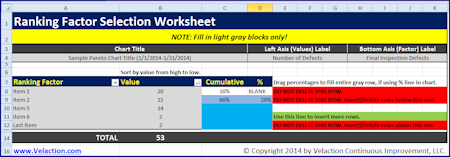Build Relationships (Principle)
“It’s just business.” That has to be one of the all-time worst expressions to come from the corporate world. The intent is to make people feel better about themselves when they are hurting others in order to get ahead. If you read into those three little words, the meaning is Read more…
Create an Information Management System
Creating a new corporate culture is a monumental challenge in the best of circumstances. Unfortunately, many organizations make it more difficult on themselves than it needs to be. Often these self-imposed obstacles seem trivial, but can have an oversized impact because of their repetitive nature.
The way you store information is one of these forms of barriers. As you progress on your Lean journey, you will find that there is a load of knowledge and information that you must manage effectively. You will have training materials, both internally developed and content that you have purchased. You will have loads of forms and other sorts of tools that will be used throughout the organization. You will have calendars, checklists, evaluations, audit documentation, and more. And that does not even include your process documents or best practices.
Pareto Chart Template
A Pareto chart is a valuable prioritization and communication tool. It is simply an ordered bar chart showing the most common item on the left and the least common on the right. This tool capitalizes on the 80/20 rule. In effect, this rule says that 80% of whatever it is Read more…
Leadership style and neural networks – Part 3
Toyota’s two pillars of management are respect for people and continuous improvement. Respect for people obviously calls on the DMN, the “default mode” neural network associated with emotion and relationships. Continuous improvement does not neglect the people factor, but it does require methodical data collection and analysis — TPN (task positive network) activities. We have seen in earlier posts in this series that good leaders can smoothly switch networks depending on the situation.
This article was written by Karen WIlhelm of Lean Reflections.)
Demand varies widely in the office, making staffing difficult
One of the biggest barriers to standardization is fluctuating short-term demand. Long term changes in demand can be managed by hiring staff or by attrition, but when there is significant variation day to day or even hour to hour, it just isn’t practical to hire new people for the handful Read more…
You and your boss don’t agree on what you do, or how much you do, making it difficult to set a standard
One of the jobs of a leader is to set clear expectations. There are two implications here. The first is that she must understand, very clearly, what she wants her team to do. The second is that she must know what her team is actually doing. And, of course, the Read more…
When you fall behind in your work, coworkers have no way to help you out
Most people understand that if there is no standard process, it is hard for other individuals to come in and help out when things go wrong. What is less commonly understood is that simply establishing consistent methods is not enough to support teamwork. The process must be configured in a Read more…
11 Common Continuous Improvement Mistakes You Are Probably Making
In any field, there are a handful of common mistakes. Continuous improvement is no different. Some of these errors come as a result of ignorance about the proper way of doing things. Some are the result of habit. And a handful come as a function of taking the path of Read more…
Section Directory for the Practical Guide to CI
VOLUME I: Introduction and Exploration Go to VOLUME I View the Phase I Directory VOLUME II: Committing Go to VOLUME II View the Phase II Directory VOLUME III: Starting the Journey Go to VOLUME III View the Phase III Directory VOLUME IV: Building the Foundation Go to VOLUME IV View Read more…
Finding Continuous Improvement Information
A successful continuous improvement program is built upon effective training materials, information, and tools. The forms you choose to use, the philosophies you adopt, the books you read, the slides you teach from, the videos you watch, and even the processes you copy and improve upon form the backbone of your improvement effort. Choose well, and your journey becomes much easier. Select poorly, and you can be fighting obstacles for years to come.
This section is intended to provide you with a better understanding of what is available to help you, and who will be providing you with that information.
Prerequisites
None, though previous continuous improvement experience leads to more informed decisions when selecting providers and materials to build a training program.
Section Details
Estimated Time for Section: 1-3 Days (may be longer if you review multiple providers)
Difficulty: Medium
Risk: Moderate
Materials Required
- Various review materials to assess options
Principles and Values
If you have done more than a simple cursory search about continuous improvement, you will probably have come across a discussion about guiding principles or values. Unfortunately, the use of those words, principles and values, is not consistent. This section attempts to provide clarity regarding these terms.
Prerequisites
None.
Section Details
Estimated Time for Section: <1 Day
Difficulty: Low
Risk: Low
Materials Required
- No special materials required


